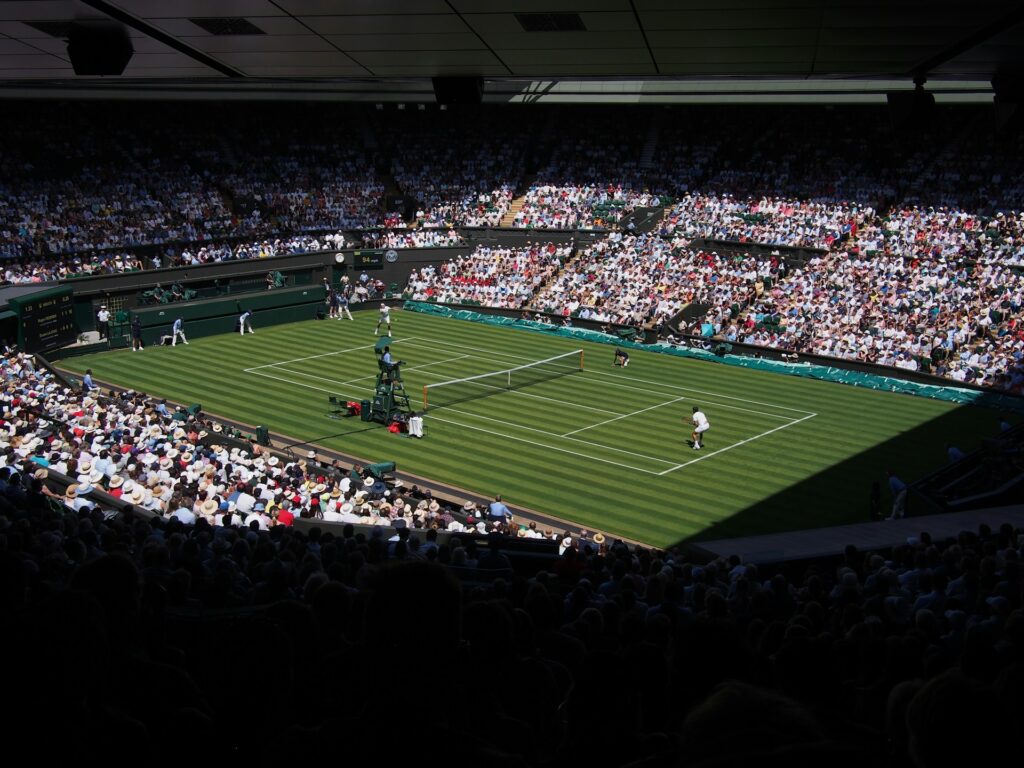Every summer, the Wimbledon Championships provides fans worldwide with the best players and produces the best tennis, but the people who work behind the scenes make it all happen.
Among these are the Championships’ Ball Boys and Girls (BBGs), trained with military-level discipline to operate on-court under the pressure of the players and the crowd.
Scarlett Parker, 20, was one of the few selected from a pool of over 1,000 teenagers, and she still remembers the socks. “I had 23 pairs of Ralph Lauren socks. Six years later, I still wear them,” she laughs.
Wimbledon 2025 kicks off on Monday 30 June and will carry on until Sunday 13 July. But for the ball boys and girls, preparation begins almost nine months earlier.

Training kicks off each October in a handful of South West London schools, invited by Wimbledon. Only Year 9 and 10 students can apply, and they’re first coached not by pros, but by former BBGs still in school themselves.
“At my school, cuts [from the group] happened weekly,” Scarlett says. “It wasn’t just about skill, your attitude, fitness, and even your shirt being tucked in mattered.”
After months of after-school and lunchtime training, 10 children from each school gather for Wimbledon’s official trials. The trials are an audition to supply balls to the best in the tennis world, and the standards are brutal.
“No chewing gum, shirts tucked in, double-knotted laces, no jewellery. We were given a number and never called by name. Everything was by the book.”
Candidates are judged on four things: fitness, knowledge of tennis rules, court positioning, and ball-handling precision.
“The fitness part nearly killed me,” Scarlett says. Warmups alone involved laps, burpees, and sprint circuits. “I nearly passed out once.”
But the pressure wasn’t just physical. “The mental side was intense. The fear of getting cut never really left,” Scarlett says.
Once selected, training continues weekly at Raynes Park, building up to a grass court week – the only chance BBGs get to step onto the same lawns as the pros before match day.
And then comes the real thing.
Each morning during the tournament, a coach picks up the kids at 9:30 a.m. and drops them off at their own private Wimbledon base.
“The whole thing’s long, about 11 hours a day,” Scarlett says. “Not knowing when you’re going on adds to the thrill. You’re always ready to run.”
Phones are locked away, schedules are unknown, and everyone waits to be called up by their team captain, checking the assignment board.
Scarlett was on court around three to four times daily, but some teams, like AA and BB, cover Centre Court and Court 1, meaning double shifts and less rest.
“Being on court is surreal,” Scarlett says. “By then, the nerves are gone. You’ve trained so hard, it’s second nature. The crowd’s huge, but you’re locked in.”
Off-court, the kids are well-fed, and downtime involves card games, naps on beanbags, or helping out on admin runs, like delivering bananas and water to players.
The players’ requests don’t stop there. “There’s a book with all the players that tells you about their specific quirks,” Scarlett says. “Some players want balls placed on their racket faces, or from a specific side, or even insist on using the same ball they used to win a point.”
To learn more about player performance analysis in tennis, check out this story: Strings, stats and stretching – Sidelines
There’s a real togetherness among staff. “They’re strict, but they care. Once the tournament starts, they relax. Some even remember your number years later,” Scarlett says.
Staff receive a full Ralph Lauren kit worth over £1,000, make around £200, and parents are awarded tickets to watch.
After finishing work as a ballgirl, Scarlett now works in court services, but says what sticks with her is: “Pride. That I did something so intense, so exclusive and got through it. For that moment, we were the best-trained ball kids in the world. That’s pretty cool.”




